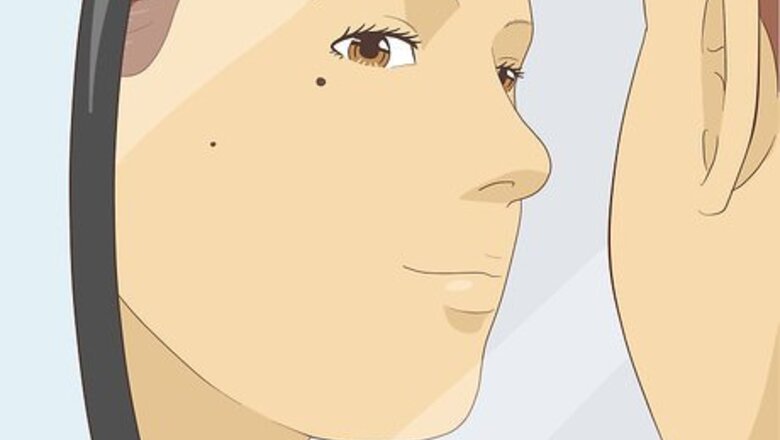
views
Observing Your Moles
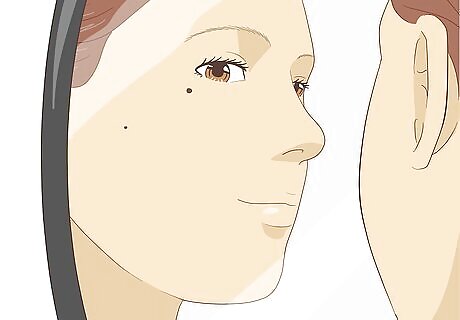
Perform a self-skin check. This can help you monitor for new mole growth. You also should watch for discoloration or growth of old moles.
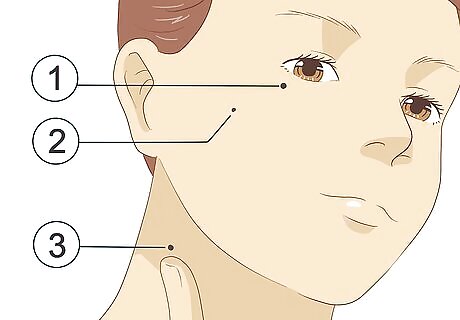
Count your moles. If you have more than 100 moles, you are a higher risk for skin cancer. You should make an appointment with a dermatologist.
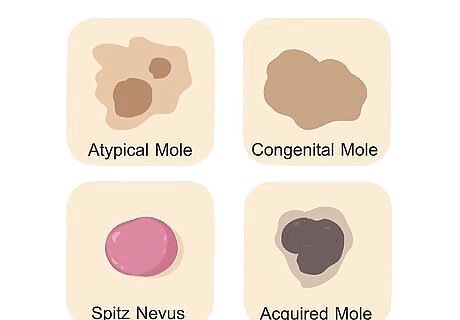
Recognize different mole types. Before you even consider removing a mole, you should know the type of mole and its symptoms. Some moles can be safe to remove, while others are not. Atypical mole — Atypical moles, or dysplastic moles, can look suspicious in color and size. They can sometime be larger than an eraser head, have an odd shape, or have many colors. If you have this type of mole, consult your doctor to be sure it is not cancerous. Congenital mole — This is the type of mole you are born with. Roughly, 1 in 100 people are born with moles. They can range in size from tiny (size of a pin head) to giant (larger than a pencil eraser). Doctors suspect that people born with giant moles are at a higher risk for skin cancer. Spitz nevus — This mole looks pink, raised, and dome shaped. It often looks like melanoma. It may ooze. It may itch or bleed. These are uncommon and mostly benign. Acquired Mole — This term means moles that are acquired after birth. These are often called common moles.
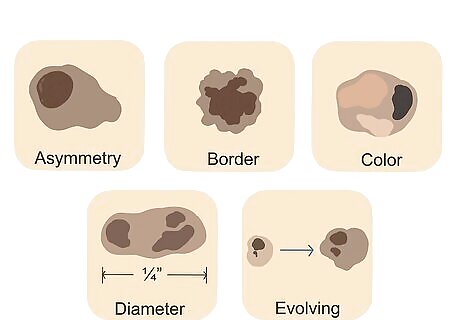
Identify melanoma symptoms. A common way to do so is to remember the “ABCD” rule. If you suspect that you have melanoma, seek medical attention immediately. Asymmetry — The mole looks uneven, or one side does not match the other in size, shape, or color. Border that is irregular — The mole has ragged, blurred, or uneven edges. Color that is uneven — The mole has multiple shades, including black, brown, tan, or blue. Diameter — The mole is large in diameter (typically around ¼ inch wide). Evolving — The mole changes size, shape, and/or color in weeks or months time.
Applying Unverified Home Remedies
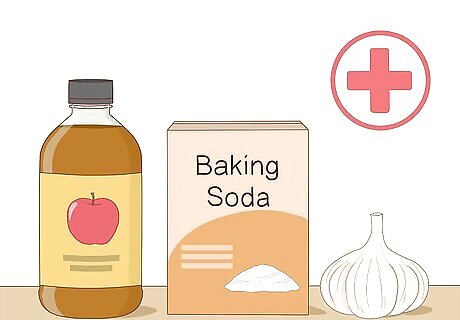
Understand the limitations and risks of home remedies. Most home remedies are based on anecdotal evidence (or personal experience) and have little or no medical evidence supporting their effectiveness. Furthermore, there is a possibility that they could result in permanent damage to the skin on your face, leaving a scar or discoloration. Speak with your physician before attempting any of these remedies.
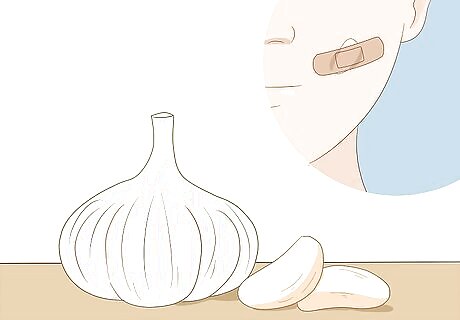
Use garlic. The enzymes in garlic are believed to dissolve moles by breaking apart the cell clusters that make them up. It can lighten the pigmentation of the moles, and in some cases, it may even get rid of the mole completely. Cut a thin slice of garlic and place it directly on the mole. Cover the area with a bandage. This technique should be repeated twice a day for two to seven days, or until the mole goes away. Alternatively, grind a clove of garlic in a food processor until it breaks down into a paste-like consistency. Dab a little of the paste onto your facial mole and cover it with a bandage. Leave this paste on overnight and rinse it off in the morning. Repeat this procedure for up to one week.

Soak the mole in juice. There are various types of fruit and vegetable juice that can be applied to the mole. Usually, some acidic or astringent element in these juices can attack the cells of the mole, causing the mole to fade and even disappear. Apply sour apple juice three times a day for up to three weeks. Dab onion juice onto the mole two to four times a day for two to four weeks. Wash the juice off 40 minutes after applying it. Spread pineapple juice over the mole and let it sit overnight before rinsing it off in the morning. You could also apply slices of pineapple directly to the mole. Repeat this once a night for a couple of weeks. Crush coriander leaves until juice forms and dab that juice directly on the mole. Let it dry, the wash it off. Repeat once a day for a couple of weeks. Mix equal parts roasted pomegranate and lime juice until a paste forms. Apply this paste to the mole at night, cover the mole with a bandage, then wash the paste off in the morning. Repeat this for as long as a week.
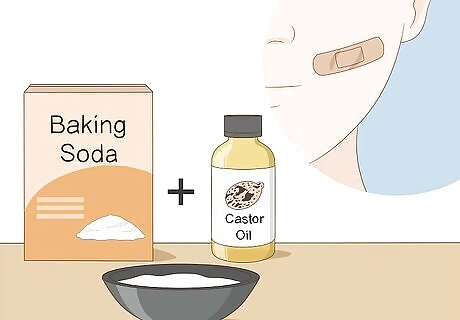
Make a paste from baking soda and caster oil. Combine a pinch of baking soda with a drop or two of caster oil. Mix with a toothpick until a paste forms. Apply this paste to the mole just before you go to bed and cover the area with a bandage. Rinse the dried paste off in the morning. Repeat this technique for about a week, or until the mole fades or disappears.
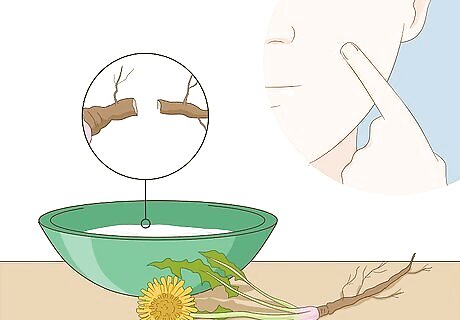
Use dandelion roots. Cut the root of a dandelion in half. Squeeze the root until a little of the milky liquid is released, and dab this liquid directly on the mole. Leave it in place for 30 minutes before washing it off. Repeat this treatment once daily for at least a week. No scientific evidence supports the notion, but it is commonly held that the milky liquid inside the dandelion root can help fade flat facial moles from sight.

Apply flaxseed paste. Combine equal parts flaxseed oil and honey. Gradually add in a pinch or so of ground flaxseed until a paste forms. Apply this paste directly to the mole and leave it on for an hour before washing it off. Repeat once a day for a week or so. While there is no scientific explanation for it, flaxseed is a popular folk remedy for many different types of skin blemishes.

Try apple cider vinegar. Apple cider vinegar is a very gentle and natural acid. Like prescription acid treatments, it is believed to gradually burn the cells of the mole until they die off, causing the mole to disappear, as well. Wash the mole for 15 to 20 minutes using warm water so that the skin becomes soft. Soak a cotton ball in apple cider vinegar. Apply the vinegar to the mole for 10 to 15 minutes. Wash the apple cider vinegar off with clean water and dry the area. Repeat these steps four times a day for a week or so. Typically, the mole will turn black and become a scab. That scab will fall off, leaving the skin beneath it mole-free.
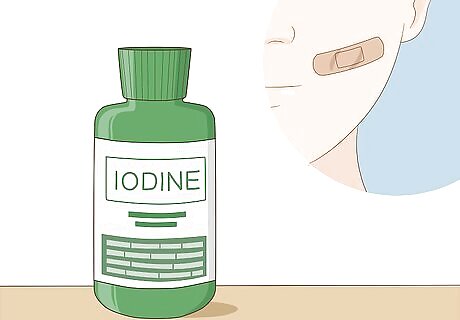
Wipe the mole out with iodine. It is a commonly held belief that iodine can break into the cells of the mole and wipe them out using a natural, gentle chemical reaction. Apply a bit of iodine directly to the mole at night and cover the area with a bandage. Rinse it off in the morning. Repeat this treatment for two to three days. The mole should begin disappearing in this time period.
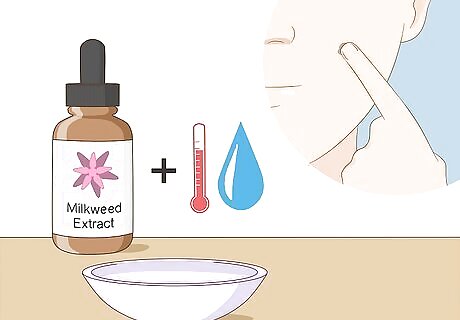
Treat the mole with milkweed herb. Steep extract of milkweed herb in warm water for 10 minutes. Apply this "tea" to the mole on your face and leave it on overnight. Clean the area in the morning. Do this every night for a week.
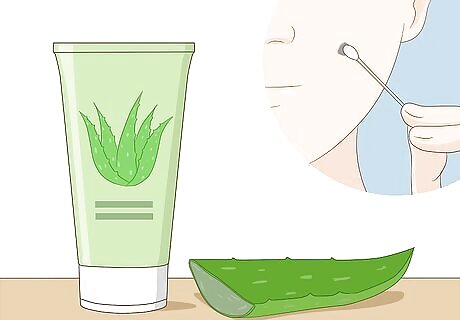
Apply aloe vera gel. Use a cotton swab to apply aloe vera gel directly to the mole. Cover it with a cotton bandage and leave it on for three hours so that your skin can soak the aloe vera in fully. Apply a fresh bandage afterward. Repeat this once a day for several weeks. Theoretically, the mole should disappear in this time period.
Seeking Professional Medical Removal
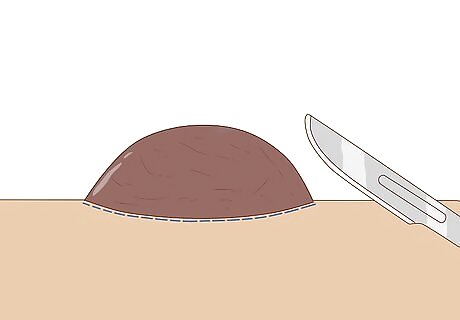
Have the mole cut off. Moles on the face can be removed by surgical cutting. A dermatologist will either shave the mole off or make a surgical excision depending on the nature of the mole. If a mole is small and mainly exists above the surface of the skin, a doctor will likely perform a surgical shave. He or she will numb the skin and use sterile scalpel to cut around and beneath the mole. No stitches will be required, but the healing process can leave a flat scar that will vary in color from the rest of your skin. This scar may or may not be as visible as the original mole. If the mole is flat or otherwise has cells that go deeper into the skin, the doctor will perform a surgical excision. During this procedure, the mole and a margin of unaffected skin will be removed with a scalpel or sharp punch device. You will need stitches to close this wound, and the procedure often leaves a scar in the form of a thin, light line. Since the procedure does scar, however, it is often not preferred for moles on the face.
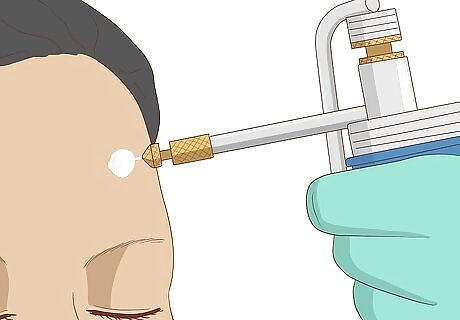
Ask a dermatologist to freeze the mole. This procedure is also referred to as "cryosurgery." The doctor will apply a small amount of cold liquid nitrogen directly to the mole by spraying or swabbing it on. This liquid nitrogen is so cold that it destroys the cells of the mole. Usually, this procedure leaves a small blister behind in place of the mole. This blister will heal on its own in a matter of days to weeks. Once the blister heals, you may or may not be left with a light scar. Even if this should happen, though, the scar is typically much lighter and more difficult to spot than the original mole, so it might still be worth considering if you have a mole on your face.
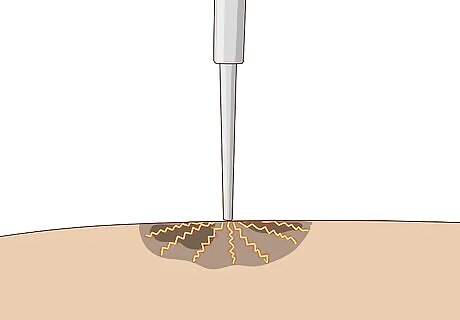
Find out if the mole can be burned off. A dermatologist can burn a mole off the face using a laser or by trying a procedure known as "electrosurgery." During laser surgery, the doctor will use a small, specialized laser to target the mole. As the laser heats the mole tissue, it breaks it down, causing the cells to die off. A small blister may result from the procedure, but this blister will heal on its own and may or may not leave a scar in its place. Note that laser removal is not usually used for deep facial moles since the laser does not usually go deep enough into the skin. During electrosurgery, the doctor will shave the top portion of the mole with a scalpel and use an electric needle to destroy the tissue beneath it. An electric current passes through the wire of the needle, heating it and causing the upper layers of skin to burn off. You might need multiple treatments, but this option leaves behind very little scarring, making it a good option to consider for moles on the face.
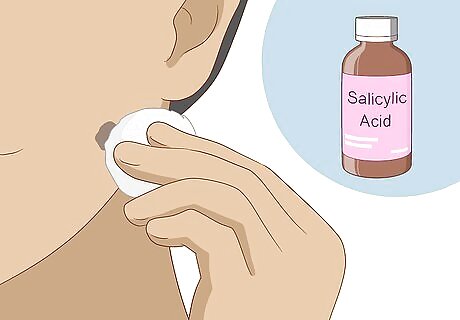
Take an acid treatment. Mild acids can be used to get rid of moles as long as they are packaged for that purpose. Try an over-the-counter version or a prescription version. Always follow the instructions on the label to avoid damaging healthy skin surrounding the mole. As a general rule, you should apply the acid directly to the mole and avoid letting it come into contact with unaffected skin. One acid commonly used to treat moles is salicylic acid. Acid treatments can come in the form of lotions, liquids, sticks, cleansing pads, and creams. Sometimes an acid treatment will get rid of a mole completely, but some weaker treatments may only fade the mole.
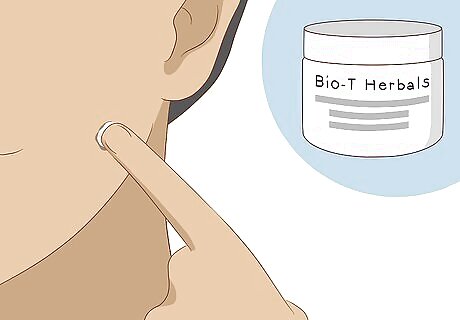
Learn about a popular herbal treatment. The only herbal treatment occasionally used by dermatologists is BIO-T. This solution is applied directly to the mole. A bandage will be placed over the treated mole, and the BIO-T will be left to work on its own. The mole can disappear in five days or so. This treatment is gentle and leaves virtually no scar behind, so it works well as an option for moles on the face. The usefulness of this treatment is still up for debate in some medical circles, so your dermatologist may or may not recommend it. If your doctor does not mention it as an option, though, you should bring it up and ask for his or her professional advice and opinion on it.



















Comments
0 comment